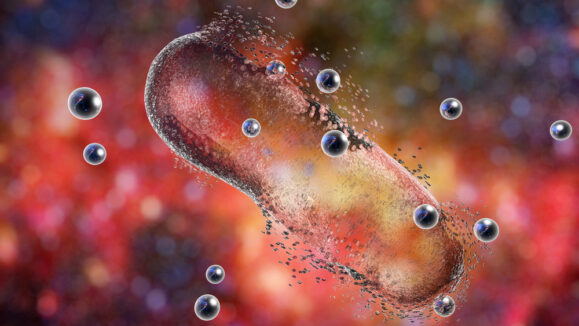Experts share the pros and cons of titration
The question of whether to titrate in subthreshold laser treatments has sparked considerable debate among ophthalmologists and researchers. Titration—adjusting the laser’s power settings to gauge the treatment’s effectiveness—has been a common practice to prevent retinal damage. Dr. Marco Lupidi (Italy) and Dr. Kenneth Fong (Malaysia) offered their views during the 24th Congress of the European Society of Retina Specialists (EURETINA 2024) in Barcelona, Spain.
The case AGAINST titration
The rationale for using subthreshold lasers lies in their ability to induce beneficial effects without visible damage, Dr. Marco Lupidi explained. This approach aims to activate retinal pigment epithelium (RPE) cells, stimulating immunomodulation and repair processes, rather than causing destructive thermal effects typical of higher-intensity lasers.
When considering the visibility of damage, Dr. Lupidi pointed out that conventional ophthalmoscopic examinations may not capture subtle changes induced by laser treatments. “We have no clear evidence of the damage itself,” he stated, but alternative imaging modalities, including multicolor imaging and blue autofluorescence, provide greater sensitivity in detecting these alterations.
To explore this further, he cited a study1 comparing various imaging modalities in detecting laser burns and investigating short-term alterations in photoreceptors following subthreshold laser treatment (SLT). The study involved 73 patients (118 eyes) with diabetic macular edema (DME) and employed two treatment approaches: titration mode and a fixed treatment regimen. The treated areas were assessed using a range of imaging techniques, including high magnification module (HMM), structural OCT, fundus autofluorescence, multicolor scanning laser imaging and fundus biomicroscopy. Two imaging sessions were held: one at baseline before treatment and another, one hour after applying the subthreshold laser.
“We strongly recommend that titration be significantly discouraged, as it increases the likelihood of unintended retinal damage. Fixed laser parameters with identical settings for every eye have been shown to be reliably safe and effective. Furthermore, there were no significant differences between the two approaches in terms of outcomes for the entire group,” he said, reinforcing the notion that standardization in treatment can reduce variability and potential harm.

The case FOR titration
On the other hand, Dr. Kenneth Fong emphasized the critical role of titration when using subthreshold laser therapy, particularly for retinal conditions such as DME and central serous chorioretinopathy (CSCR). Despite the growing prominence of anti-VEGF treatments and long-duration devices, he stressed that the subthreshold laser remains relevant in the treatment of macular diseases, especially in combination with other therapies.
“Retinal laser photocoagulation has been around for many years, and it has developed immensely in the last 20 years,” Dr. Fong explained, noting the evolution of this modality into a much safer treatment for macular diseases. However, with the rise of anti-VEGF treatments, the use of retinal lasers has decreased, especially for macular diseases. Nonetheless, Dr. Fong asserted that the subthreshold laser plays an important role in treating the increasing global cases of DME.
Dr. Fong elaborated on the unique benefits of subthreshold lasers in avoiding damage to the retina. “The real aim of subthreshold laser is not to induce burns,” he says, emphasizing that the goal is to provide minimal treatment that induces changes in the retinal pigment epithelium (RPE) and photoreceptors to improve macular edema without leaving visible scars. This approach reduces the risk of long-term complications such as scarring and enlargement of laser burns, especially in areas close to the fovea.
Titration, according to Dr. Fong, is the solution to ensuring safe and effective use of subthreshold lasers, as every patient requires a different level of power. By titrating, or adjusting the laser power based on individual needs, the risk of over- or under-treatment is minimized, making subthreshold lasers a flexible and safe option.
Showcasing a paper titled Subthreshold Laser Therapy Guidelines for Retinal Disease by The Subthreshold Ophthalmic Laser Society (SOLS), Dr. Fong highlighted that the SOLS experts suggest titration with 50% of threshold power.2
“This paper took about two years to complete. We worked very hard engaging retinal specialists from around the world, all of whom are users of subthreshold lasers,” he explained. “After many rounds of discussion, we finally reached a consensus statement that we do indeed encourage titration. The most important thing to remember is to choose a spot outside the fovea. With a 5% duty cycle and a 160 µm spot size for dense treatment, you should adjust the power until you observe a barely visible burn.”
A major challenge for physicians starting with subthreshold laser therapy is uncertainty about whether enough treatment has been applied. However, “on the Easyret® machine, there’s just one button that you press to immediately reduce the power by 50%. This feature effectively addresses the concern of potentially over- or under-treating the case,” explained Dr. Fong.
“In today’s era, where care must be tailored to each patient, the absorption of laser energy is multifaceted and depends on several factors, including pigmentation, retinal pigment epithelium (RPE) status, media transparency, cataracts and overall retinal condition. By reducing the power by 50% after observing a barely visible burn, we believe this method is safe enough to prevent retinal damage,” he said, reiterating that titration is critical for ensuring safe, personalized treatment.
Editor’s Note: A version of this article was first published on PIE magazine Issue 32.
References
- Lupidi M, et al. Subthreshold yellow micropulse laser for treatment of diabetic macular edema: to titrate or not to titrate? RETINA. [Unpublished, under review]
- Chhablani J; SOLS (Subthreshold Laser Ophthalmic Society) writing committee. Subthreshold laser therapy guidelines for retinal diseases. Eye (Lond) 2022;36(12):2234-2235



